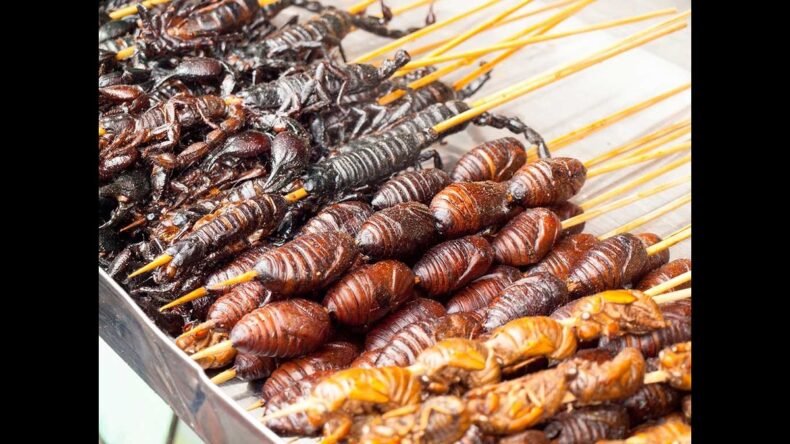
In a compact chamber located near the Alps in northern Italy, numerous crates brimming with millions of crickets are neatly arranged in vertical stacks. Within this confined space, the crickets spring and produce vibrant chirping sounds, as they approach their destined purpose of becoming sustenance.
The procedure involved is straightforward: the crickets undergo freezing, boiling, drying, and subsequently, pulverization. Operated under the name of the Italian Cricket Farm, this establishment stands as the largest insect farm within the country, ingeniously transforming approximately one million crickets into essential components for food on a daily basis.
Consuming crickets, ants, and worms has been a customary practice in certain regions of the world, particularly in Asia, spanning back thousands of years.
However, with the recent approval from the European Union to sell insects as food for human consumption earlier this year, can we anticipate a change in perspectives throughout Europe?
Italy stands out as a country within Europe where resistance towards consuming insects is particularly prominent, as per data from global public opinion company YouGov. Opposition to this practice even extends to the government, which has taken measures to prohibit the use of insects in the production of pizza and pasta.
Nonetheless, are we on the cusp of witnessing a transformation? Several Italian producers have dedicated themselves to perfecting the creation of cricket-based pasta, pizza, and snacks.
Ivan, an advocate of insect farming, emphasizes the sustainability of their methods. He highlights that the production of one kilogram of cricket powder only necessitates approximately 12 liters of water, in stark contrast to the thousands of liters required for the same amount of protein derived from cows.
Furthermore, insect farming requires significantly less land compared to traditional livestock farming, which is notorious for its environmental impact. Given the pollution generated by the meat and dairy industry, an increasing number of scientists believe that insects could play a vital role in addressing climate change.
In a restaurant near Turin, Chef Simone Loddo has modified his recipe for fresh pasta, which has a history dating back nearly a millennium. Now, the dough comprises 15% cricket powder, representing a novel adaptation embracing the potential of insects as a culinary ingredient.
Ivan explains, “If you wish to purchase food products derived from crickets, it will come at a price. Cricket flour is considered a luxury item, with a cost of approximately €60 (£52) per kilogram. For instance, a pack of cricket pasta can reach up to €8, which is up to eight times more expensive than regular pasta found in supermarkets.”
At present, insect-based food remains a niche choice within Western societies, as farmers are able to offer poultry and beef at lower prices.
Claudio Lauteri, the owner of a multi-generational farm near Rome, emphasizes that the meat he produces is not only of excellent quality but also more affordable compared to cricket flour.
However, the challenge of embracing insect-based food goes beyond price; it pertains to social acceptance.
In Italy, the number of individuals reaching the age of 100 and beyond is rapidly increasing, and the Mediterranean diet is often hailed as the key to a healthy lifestyle.
Claudio argues, “Italians have been consuming meat for centuries, and in moderation, it is certainly healthy.” He perceives insect food as a potential threat to Italian culinary traditions, which hold a universally sacred status in the country.
According to him, these insect-based products are considered inferior and not part of the Mediterranean diet. Moreover, Claudio raises concerns about potential health risks associated with consuming insects, stating, “We don’t know what eating insects can do to our bodies.”
Expressing strong opposition, he firmly rejects these new food products and refuses to consume them.













